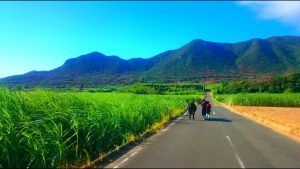Amagi
Japan
2024
Contact
Website:
https://www.town.amagi.lg.jp/
Amagi is nestled in the northwest of Tokunoshima, one of the remote islands in Kagoshima Prefecture, Japan. Known for its stunning natural landscapes, rich biodiversity, and traditional culture, Amagi offers a unique experience that harmonizes outdoor adventure with local heritage. The village is surrounded by a mountain range and features a subtropical climate, making it an ideal spot for agriculture and tourism alike. It has recently gained recognition for its commitment to sustainability and conservation, attracting visitors interested in both nature and culture.
HIGHLIGHTS
-

World Natural Heritage Status
Amagi is part of the Tokunoshima World Natural Heritage Site, designated in July 2021. This designation highlights the village’s remarkable biodiversity, which includes endemic species like the Amami rabbit. The lush subtropical rainforest and the unique ecosystem provide a vital habitat for various flora and fauna, making conservation efforts a priority for the community.
-

Cultural and Agricultural Heritage
The village boasts a rich agricultural tradition, characterized by sustainable practices that include mixed farming with sugarcane, livestock, and various crops. These practices reflect the local community’s deep connection to the land and its resources. By preserving traditional farming methods, Amagi Village not only supports its economy but also enhances its cultural identity, allowing visitors to experience authentic local customs.
-

Sports Tourism Hub
Amagi Village is well-known for hosting the annual “Triathlon in Tokunoshima,” a prestigious middle-distance race that attracts athletes from across Japan. This event showcases the village’s beautiful landscapes and warm climate, making it a prime location for sports training camps. The influx of athletes and tourists contributes to the local economy and promotes a healthy, active lifestyle within the community.
The village serves as an exemplary model of how a community can embrace its natural surroundings while fostering cultural heritage and promoting sustainable tourism practices.

